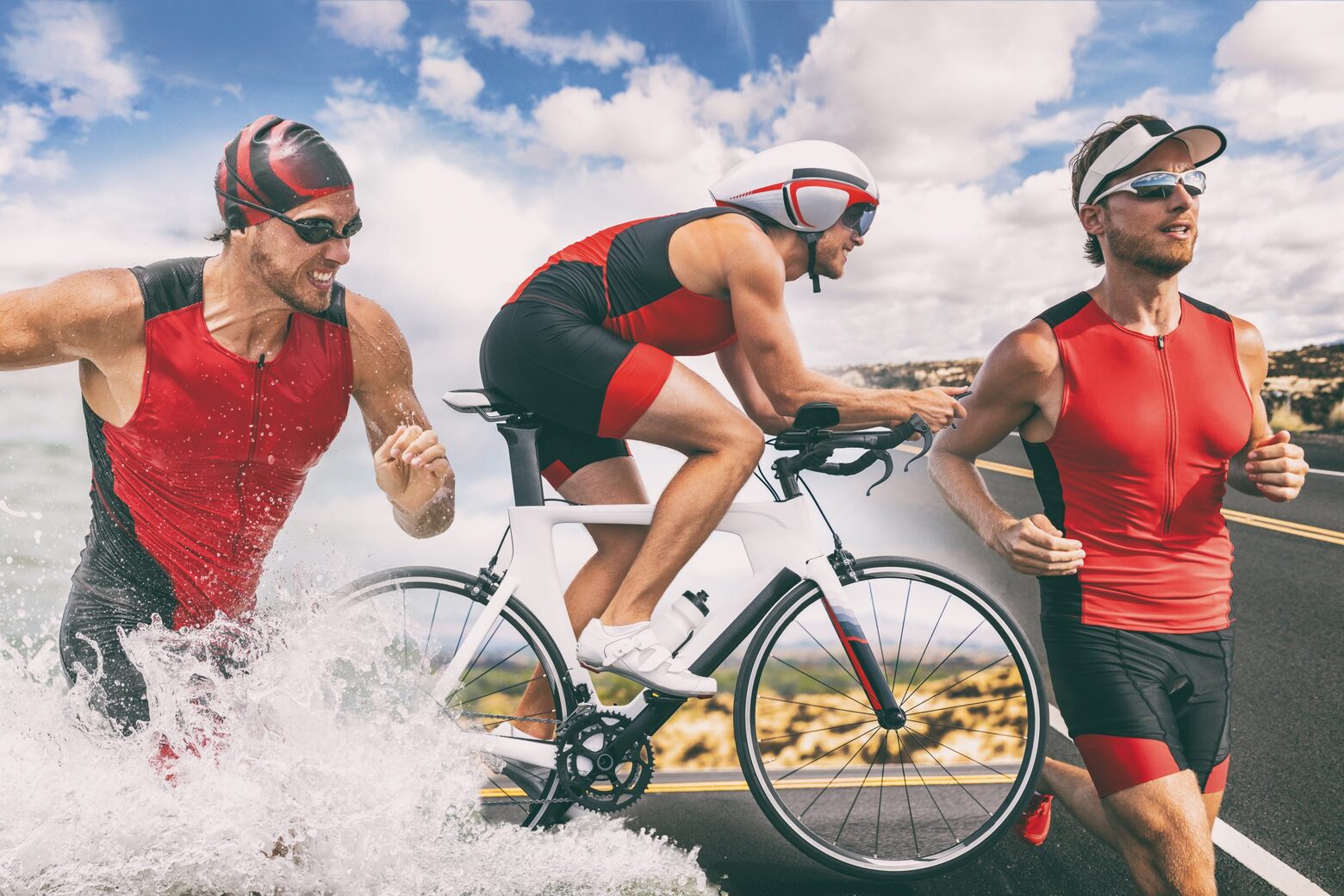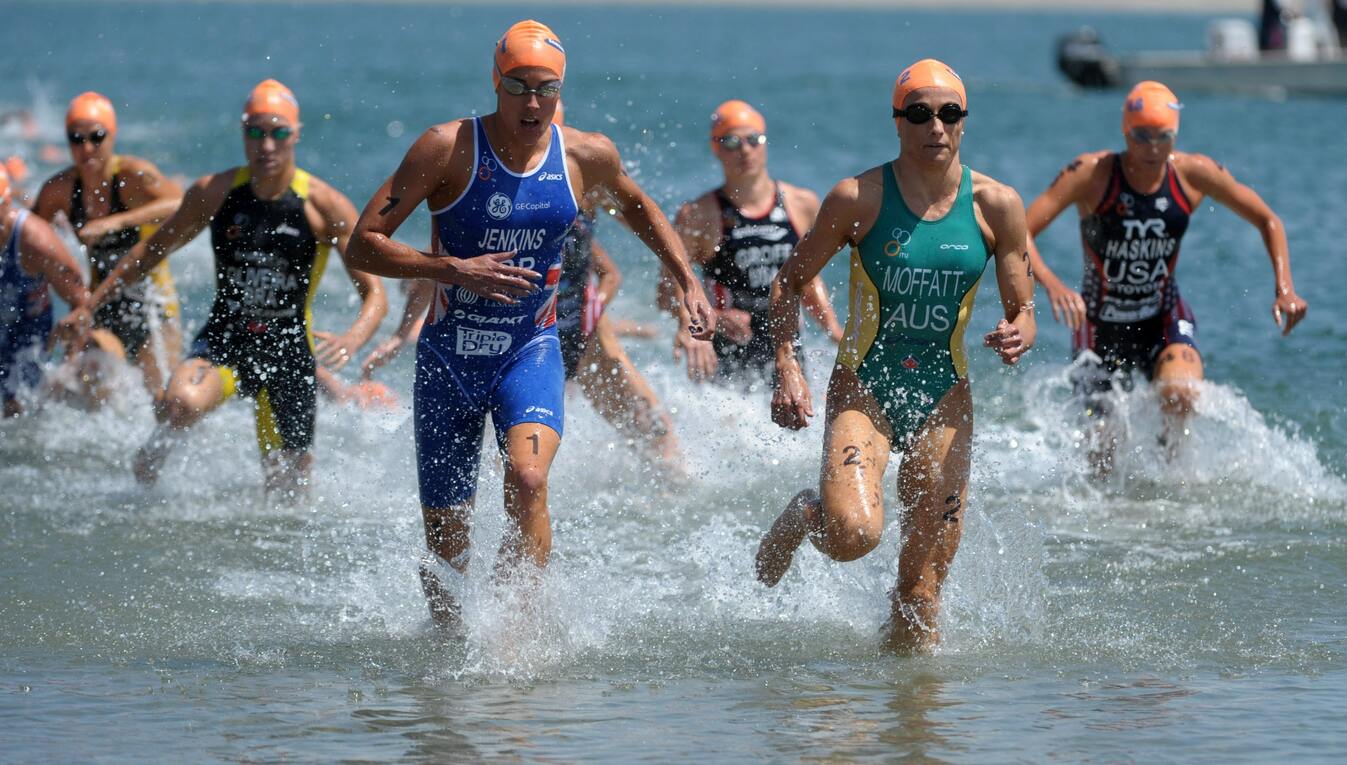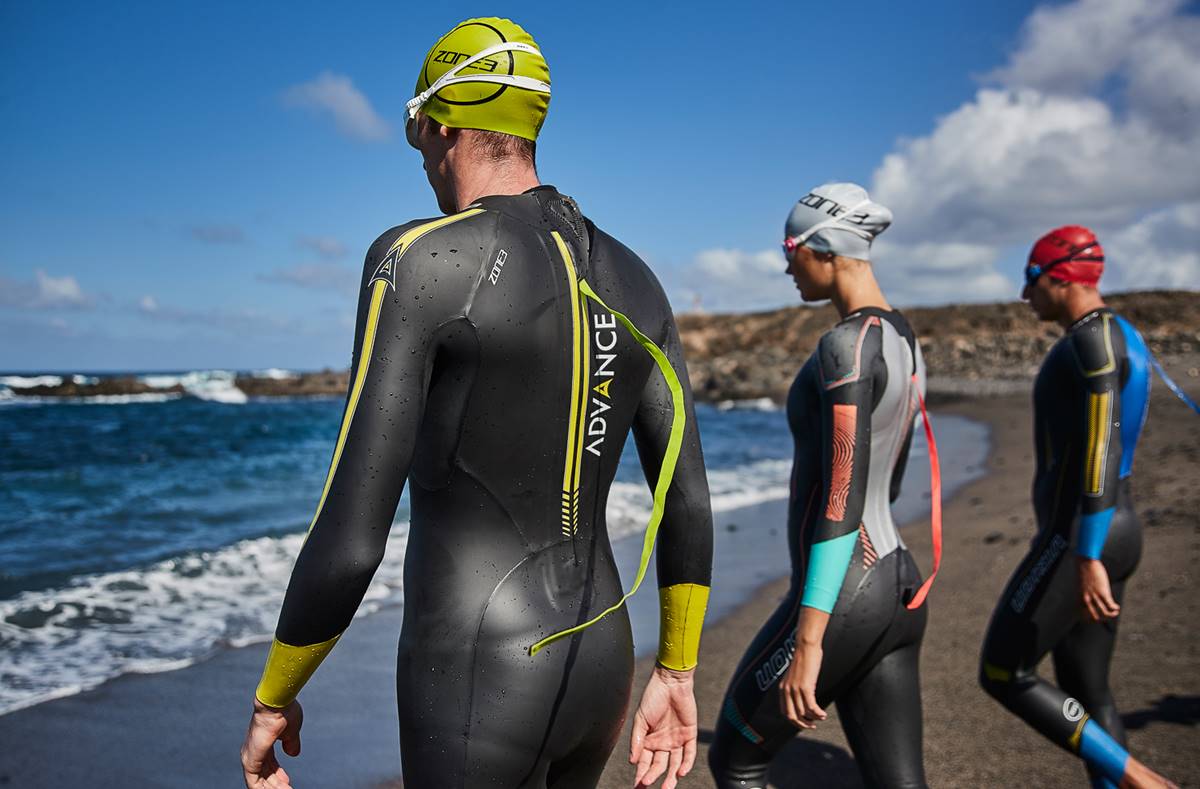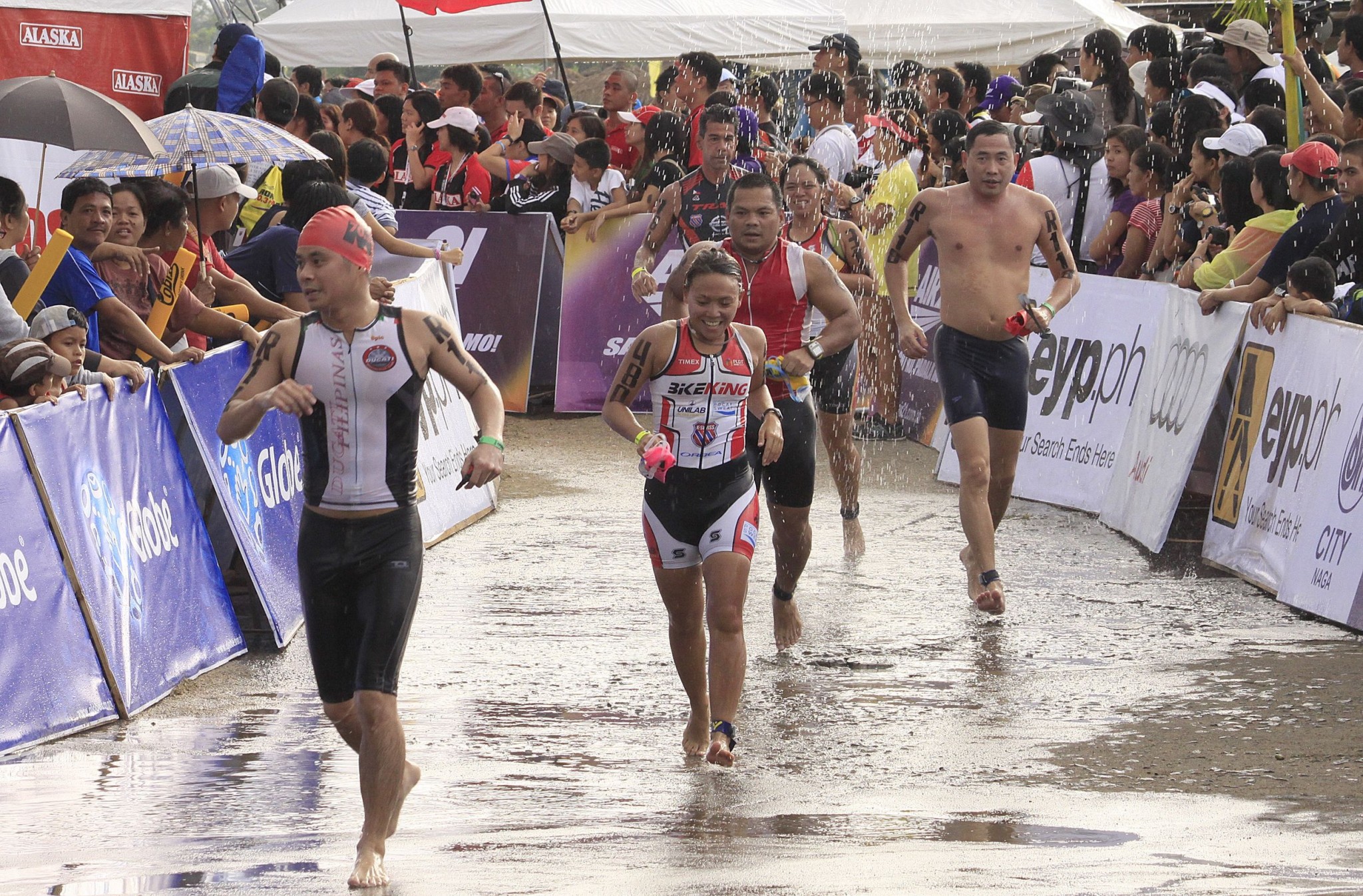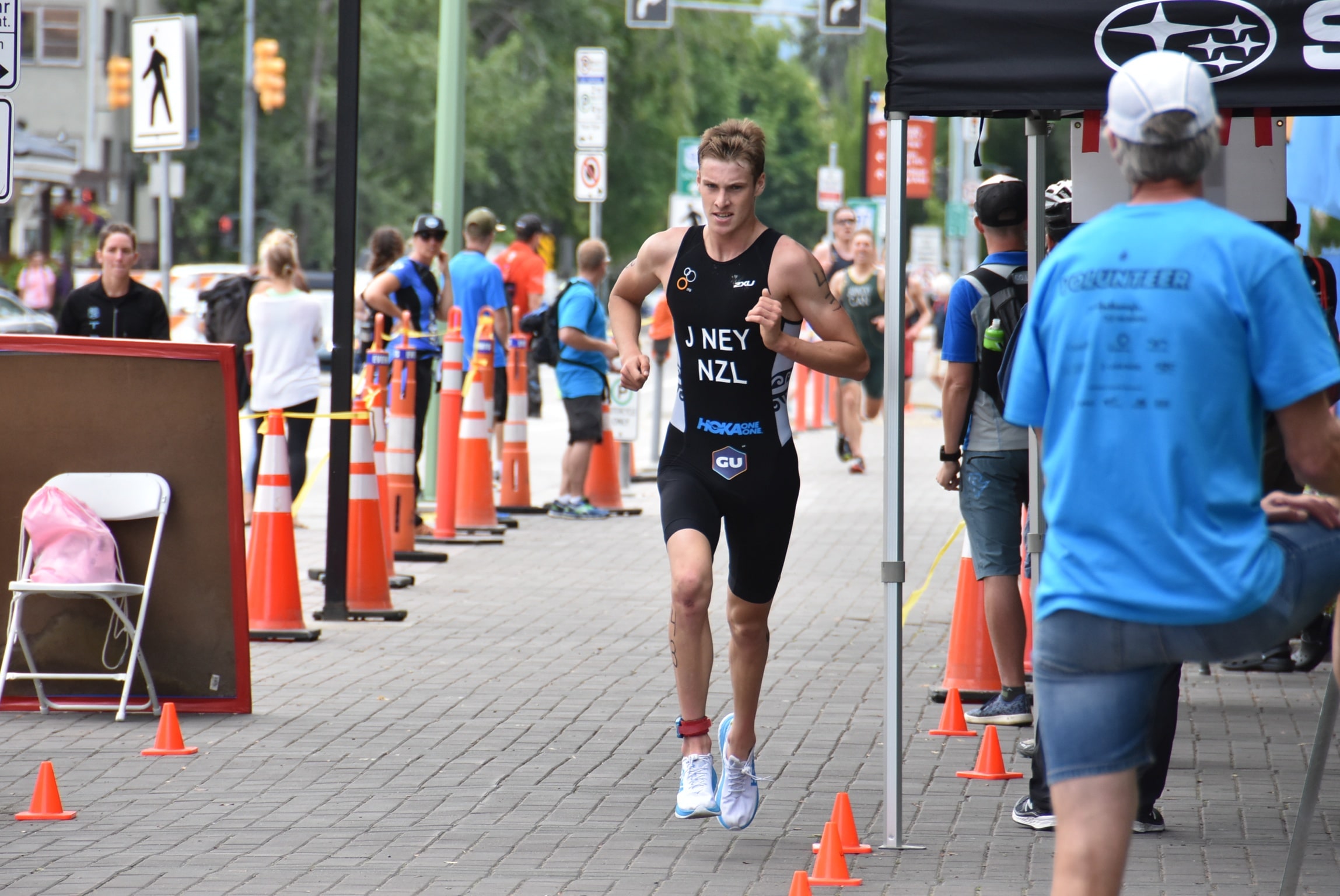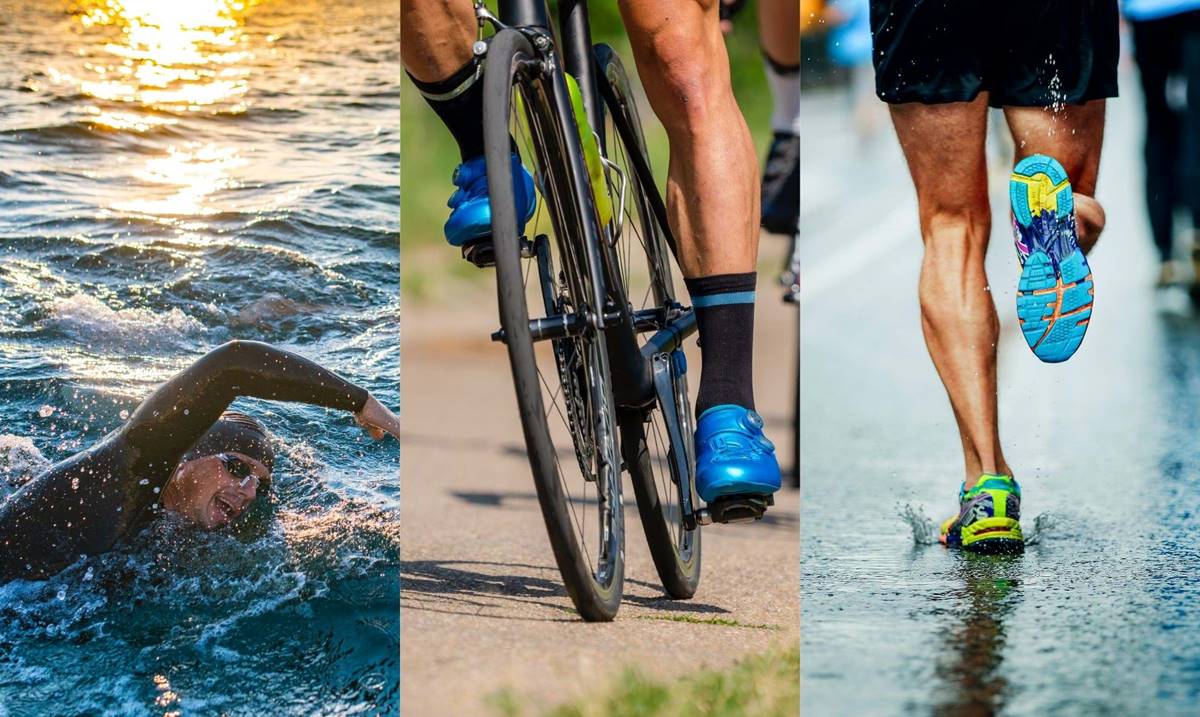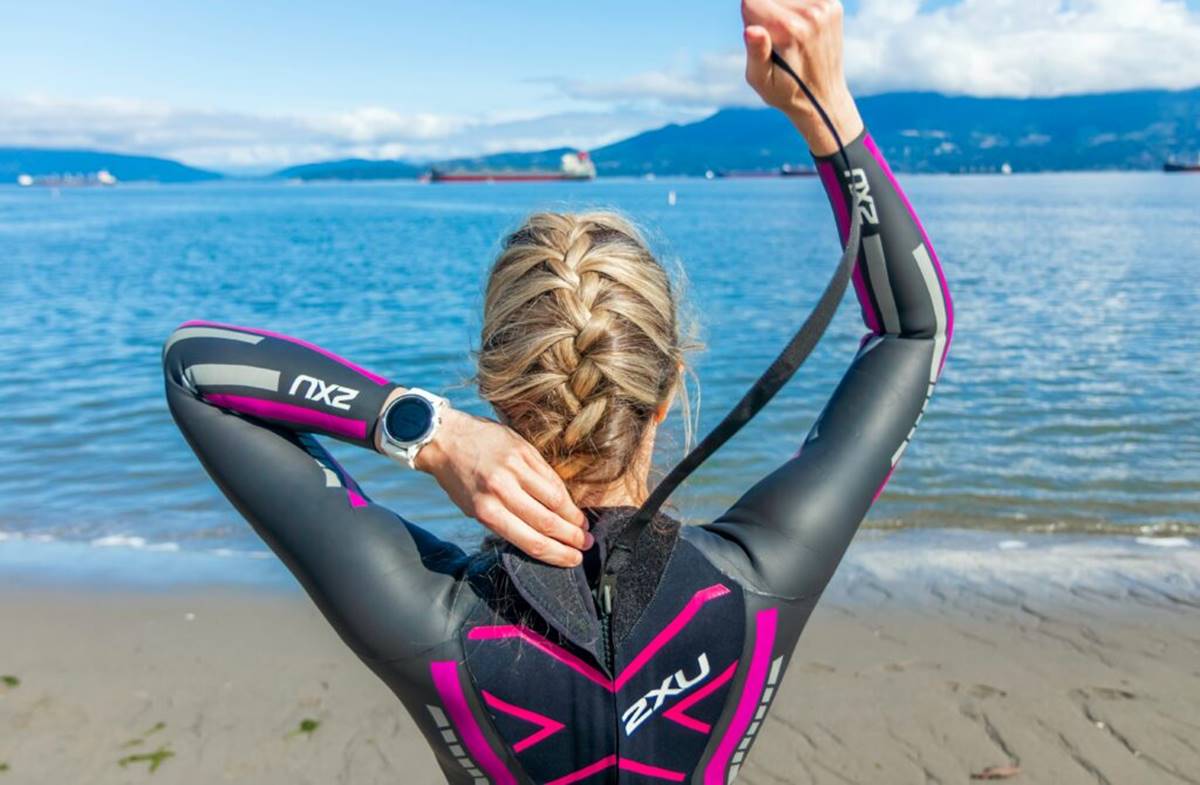

Featured
Can I Don’t Use A Wetsuit In A Triathlon
Modified: October 3, 2023
Discover the importance of wearing a wetsuit in a triathlon and avoid the regret. Don't miss this featured article on how much you'll hate yourself if you don't use one!
Introduction
Preparing for a triathlon involves careful planning and consideration of various factors that contribute to a successful race. Among these factors is the decision to wear a wetsuit during the swimming portion of the event. While the use of a wetsuit is not mandatory, many participants opt to wear one due to its potential benefits.
In this article, we will explore the importance of a wetsuit in a triathlon and discuss the potential advantages and disadvantages of not using one. We will also consider personal factors to help you make an informed decision based on your individual circumstances and needs.
Triathlons are physically demanding endurance events that require participants to swim, cycle, and run. The swimming portion, which usually takes place in open water such as a lake or ocean, presents unique challenges. The water temperature can be colder than comfortable, and the added resistance of swimming without a wetsuit can affect performance and energy expenditure. As a result, many athletes choose to wear a wetsuit to improve their overall experience and performance during the triathlon.
However, it’s important to note that the decision to wear a wetsuit ultimately depends on personal preference, as well as specific race regulations. Some triathlons have specific guidelines on wetsuit usage, including rules regarding water temperature and wetsuit thickness.
In the following sections, we will delve deeper into the potential benefits of using a wetsuit, as well as the disadvantages and the personal factors that should be considered before making a decision. Whether you are a seasoned triathlete or a beginner, understanding the implications of not wearing a wetsuit will help inform your choices and maximize your performance in the race.
The Importance of a Wetsuit in a Triathlon
A wetsuit serves as more than just an additional piece of gear for triathlon swimming. It can significantly impact your performance and comfort during the race. Here are some key reasons why a wetsuit is considered important in a triathlon:
- Thermal Regulation: One of the primary benefits of wearing a wetsuit is its ability to provide thermal insulation. Open water temperatures can be colder than expected, especially in early morning races or in bodies of water such as lakes or the ocean. The neoprene material of a wetsuit traps a thin layer of water against your skin, which warms up through your body heat. This insulation helps to maintain a comfortable temperature and minimize the risk of hypothermia, allowing you to swim more efficiently.
- Buoyancy and Floatation: Wetsuits are designed to add buoyancy and enhance your natural floatation in the water. This buoyancy helps to lift your body slightly, improving your body position and reducing drag. By staying higher in the water, you reduce resistance and can swim with less effort, ultimately conserving energy for the cycling and running portions of the triathlon.
- Speed and Hydrodynamics: The smooth surfaces and specialized panels of a wetsuit create a hydrodynamic effect, reducing drag and increasing your swim speed. The neoprene material reduces friction as you move through the water, allowing you to glide through the strokes more effortlessly. This improved efficiency translates into quicker swim times and a potential competitive advantage.
- Protection and Safety: In addition to the performance benefits, a wetsuit offers an added layer of protection in open water. It provides a barrier against potential hazards such as jellyfish stings, scratches from rocks or seaweed, and protects your skin from the sun’s harmful UV rays. The wetsuit’s snug fit also adds a sense of security, making you feel more confident and at ease during the swim leg of the triathlon.
Overall, the importance of a wetsuit in a triathlon cannot be underestimated. It provides thermal regulation, buoyancy, speed, and an added layer of protection. However, it is important to consider personal factors and race regulations when deciding to wear one. In the following sections, we will explore the potential benefits and drawbacks of not using a wetsuit in a triathlon, allowing you to make an informed decision based on your individual circumstances and goals.
Potential Benefits of Using a Wetsuit
Wearing a wetsuit in a triathlon can provide several advantages that may enhance your performance and overall race experience. Let’s take a closer look at the potential benefits:
- Improved Buoyancy: The buoyancy provided by a wetsuit can help lift your body in the water, improving your body position and reducing drag. This allows for a more streamlined and efficient swim, conserving energy for the remaining segments of the triathlon.
- Increased Speed: The hydrodynamic properties of a wetsuit reduce water resistance and friction, enabling you to move through the water with greater ease and speed. This can lead to faster swim times and a competitive advantage over competitors who opt not to wear a wetsuit.
- Enhanced Thermal Comfort: Swimming in open water can expose you to cold temperatures, which can decrease your performance and make the swim leg uncomfortable. Wetsuits provide insulation and retain body heat, helping to maintain a comfortable temperature during the swim and reducing the risk of hypothermia.
- Protection Against the Elements: Wetsuits offer an additional layer of protection against potential hazards in open water. They can protect your skin from the sun’s harmful rays, minimize the risk of cuts or abrasions from rocks or other objects, and provide a barrier against jellyfish stings or other marine life encounters.
- Increased Confidence: Wearing a wetsuit can contribute to a sense of security and confidence during the swim leg of the triathlon. The snug fit of a wetsuit provides a reassurance that can help calm nerves and boost overall performance. This psychological advantage can have a positive impact on your race experience.
While these benefits make a compelling case for wearing a wetsuit, it’s essential to consider individual preferences, race regulations, and personal comfort when making the decision. In the next section, we will discuss the potential disadvantages of not using a wetsuit in a triathlon so that you can evaluate the full picture before making your choice.
Disadvantages of not Using a Wetsuit
While there are several benefits to wearing a wetsuit in a triathlon, there are also some potential drawbacks to consider if you choose not to wear one. Here are a few disadvantages of forgoing a wetsuit during the swim leg:
- Greater Exposure to Cold Water: Without the insulation of a wetsuit, you may be more exposed to cold water temperatures, especially in races held in colder climates or early morning starts. Cold water can affect your breathing, reduce muscle function, and increase the risk of hypothermia, which negatively impacts performance and comfort.
- Increased Energy Expenditure: Swimming without the buoyancy provided by a wetsuit requires more effort and energy. Without the added floatation, you may find yourself expending more energy to maintain body position and propel yourself forward, potentially leading to increased fatigue and decreased performance in the later stages of the race.
- Reduced Speed and Efficiency: The absence of a wetsuit can increase drag and resistance in the water, making it harder to maintain a streamlined position and swim at optimal speed. This can result in slower swim times and potentially put you at a disadvantage compared to competitors who choose to wear a wetsuit.
- Less Protection: Not wearing a wetsuit means foregoing the added protection it provides against potential hazards in the water. Rocks, seaweed, jellyfish, and other marine life may pose a greater threat without the barrier of neoprene, increasing the risk of injury or discomfort during the swim.
- Psychological Impact: It’s important to acknowledge the psychological impact of not wearing a wetsuit. The absence of a wetsuit may lead to feelings of self-doubt or anxiety about the swim leg, which can affect performance and overall race experience. Confidence plays a crucial role in endurance events, and not having the security of a wetsuit can potentially impact your mindset.
It’s crucial to assess these potential disadvantages in light of your personal preferences, abilities, and race conditions. In the next section, we will explore important personal factors to consider when making a decision about wearing a wetsuit in a triathlon.
Personal Factors to Consider
When deciding whether or not to wear a wetsuit in a triathlon, it’s important to take into account several personal factors that can influence your choice. Here are some key considerations:
- Comfort and Familiarity: Consider your comfort level and familiarity with swimming in a wetsuit. If you have trained extensively in a wetsuit and feel comfortable and confident swimming with it, it may be advantageous to wear one in the race.
- Swimming Ability: Assess your swimming ability and experience. If you are a strong swimmer with efficient technique and good endurance, you may be able to compensate for the lack of a wetsuit by relying on your skills and conditioning.
- Water Temperature: Take into account the water temperature at the race venue. If the water is significantly cold or below a certain threshold set by race organizers, wearing a wetsuit may be necessary to ensure your safety and comfort during the swim.
- Race Distance: Consider the distance of the triathlon. For longer distances, such as Ironman events, the additional buoyancy and thermal regulation provided by a wetsuit can be particularly beneficial, as the swim leg is a significant portion of the race.
- Regulations and Restrictions: Familiarize yourself with the rules and regulations of the specific triathlon you are participating in. Some races have guidelines regarding water temperature, wetsuit thickness, or even prohibitions on wetsuit usage. Make sure to comply with these guidelines when making your decision.
- Training and Preparation: Evaluate the time and effort you have dedicated to training without a wetsuit. If you have primarily trained without one and feel confident in your ability to swim efficiently and comfortably, it may be more appropriate to race without a wetsuit.
By considering these personal factors, you can make a more informed decision about whether or not to wear a wetsuit in your triathlon. Remember that the choice ultimately depends on what you feel will optimize your performance, comfort, and enjoyment during the race.
Training and Preparation without a Wetsuit
If you have decided to race without a wetsuit in a triathlon, it’s important to adjust your training and preparation accordingly. Here are some considerations for training without a wetsuit:
- Open Water Practice: Incorporate open water swim sessions into your training regimen. This will help you acclimate to swimming without the added buoyancy and thermal insulation provided by a wetsuit. Practice in conditions similar to those you can expect on race day, including water temperature and currents.
- Adapt Technique: Focus on refining your swimming technique for efficiency. Without the buoyancy of a wetsuit, it becomes even more essential to have a streamlined stroke, effective body position, and a strong kick. Consider working with a swim coach or joining a swim squad to improve your technique.
- Simulate Race Conditions: To better prepare for the swim leg of the triathlon, simulate race conditions in your training. Practice open water starts, sighting, and swimming in a pack to prepare for the challenges you may face during the race without the added comfort of a wetsuit.
- Gradual Exposure to Cold Water: If you are racing in colder water, gradually expose yourself to lower temperatures during training. Start with shorter swims in colder water and gradually increase the duration. This will help your body adapt to the lower temperatures and minimize the shock on race day.
- Mental Preparation: Prepare yourself mentally to swim without a wetsuit. Visualize yourself swimming confidently and comfortably, focusing on your technique and maintaining a positive mindset. Practicing mental toughness during training can help you overcome any challenges that may arise during the race.
- Equipment and Gear: Pay attention to your swim gear. Ensure you have a well-fitting, comfortable swimsuit that allows for a full range of motion. Consider investing in a good pair of goggles that provide clarity of vision in open water. Proper equipment can enhance your comfort and performance in the absence of a wetsuit.
By incorporating these training and preparation strategies into your routine, you can optimize your swimming performance without relying on the benefits provided by a wetsuit. Remember to tailor your training approach to your specific preferences, the race conditions, and your overall goals for the triathlon.
Psychological Impact of Not Using a Wetsuit
The decision to not wear a wetsuit in a triathlon can have a significant psychological impact on athletes. Here are some aspects to consider regarding the psychological effects of not using a wetsuit:
- Confidence and Mindset: Wearing a wetsuit can provide a sense of security and confidence, knowing that it offers additional flotation and protection. The absence of a wetsuit may lead to feelings of self-doubt or anxiety about the swim leg. Maintaining a positive mindset and focusing on your training and preparation can help counter these psychological challenges.
- Perceived Disadvantage: Athletes who don’t wear a wetsuit may feel that they are at a disadvantage compared to those who do. It’s crucial to remember that individual performance is multifaceted and not solely determined by the presence or absence of a wetsuit. Focus on your strengths, training, and overall race strategy to overcome perceived disadvantages.
- Adapting to Race Conditions: Racing without a wetsuit requires mental flexibility and the ability to adapt to the conditions on race day. Open water swimming can be unpredictable, with factors such as current, wind, and water temperature coming into play. Embrace the challenge and view it as an opportunity to demonstrate your resilience and adaptability as an athlete.
- Mental Toughness: Not wearing a wetsuit can test your mental toughness and resilience. It requires a strong mindset to push through any discomfort, fatigue, or negative thoughts that may arise during the swim leg. Building mental toughness through visualization, positive self-talk, and focusing on your training accomplishments can help you overcome these challenges.
- Celebrating Personal Achievement: Racing without a wetsuit can be an opportunity to celebrate your personal achievement and demonstrate your ability to perform under different circumstances. Embrace the challenge and view it as a chance to showcase your determination and dedication to the triathlon sport.
While the psychological impact of not using a wetsuit should not be underestimated, it’s important to remember that mindset and mental preparation play a crucial role in triathlon performance. Embrace the challenge, focus on your personal goals, and trust in your training to overcome any psychological barriers that may arise.
Conclusion
Deciding whether or not to wear a wetsuit in a triathlon is a personal choice that depends on various factors. While a wetsuit offers several benefits, including thermal regulation, buoyancy, speed, and added protection, there are also drawbacks and personal considerations to take into account.
Understanding the potential advantages and disadvantages can help you make an informed decision that aligns with your goals, abilities, and race conditions. Reflecting on personal factors such as comfort, familiarity, swimming ability, water temperature, race distance, regulations, and training preparation is crucial in determining whether or not to wear a wetsuit.
If you choose not to wear a wetsuit, it’s important to adjust your training by simulating race conditions, refining your technique, practicing in open water, and mentally preparing for the challenges ahead. Approach the swim leg with confidence, mental toughness, and a focus on your personal achievements, recognizing that triathlon success is determined by a combination of factors beyond the presence or absence of a wetsuit.
Ultimately, the decision to wear a wetsuit in a triathlon should be based on what you believe will optimize your performance, comfort, and overall race experience. Whether you choose to don a wetsuit or swim without one, embrace the challenge, trust in your training, and enjoy the journey of participating in a triathlon.
